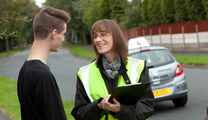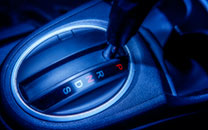Tips for Tackling Snow and Ice On The Roads
15 Dec 2021

There aren’t many drivers who are confident when it comes to driving in snowy and icy conditions partly because we in the UK are not so used to seeing heavy snowfall so that when we do the resulting road gridlock of abandoned vehicles and unconfident drivers causes chaos.
Follow our tips and discover how you can negotiate wintry road surfaces with confidence.
1 Prepare Well For Your Journey on the road
Before you set off clear any snow and ice from all your vehicle windows. Use an ice-scraper or de-icer to do this. Never use boiling water as this could result in cracks in the windows. Check that your lights and wipers are working properly and that there is plenty of screen wash in the reservoir under the bonnet. Your tyres should be properly inflated and showing a legal tread depth (1.6mm minimum). Carry a blanket, shovel and if necessary a thermos flask with a hot drink for if you get stuck in a long traffic jam. Make sure your mobile phone is fully charged in case you need to make an emergency call.
2 Dress Appropriately
Wrap up warm and wear footwear which is comfortable, dry and non-slip. The last thing you need should you have to abandon your vehicle and walk is getting freezing cold and slip-sliding around.
3 How To Drive In Snow And Ice
Gently is the watchword. Move off in second gear where possible and accelerate gently away to avoid wheel spin. Move up the gears as soon as you can but don’t feel you have to stay in top gear; you will often have more control in second and third gear due to natural engine braking especially going downhill. Keep a greater distance than usual from the vehicle in front.
Maintain a steady speed – slower than usual where necessary but not too slow – and avoid harsh braking which may be ineffective on slippery road surfaces.
Don’t brake on a bend; brake gently before turning the steering wheel. If the vehicle loses grip, take your foot off the accelerator and don’t over-steer.
In the event of a skid steer gently in the direction of the slide, for instance if the car is sliding to the right, steer to the right and don’t be tempted to slam on the brakes.
Try to drive on fresh snow where possible rather than in the compressed tyre tracks of other vehicles.
Finally, always use dipped headlights and fog lights in very low visibility. Wear sunglasses to reduce glare from the low winter sun.
If you feel you’re in need of a refresher lesson, or are looking to start driving this winter, why not get in touch– we’d be happy to help you become confident in your ability to driver, whatever the weather!










